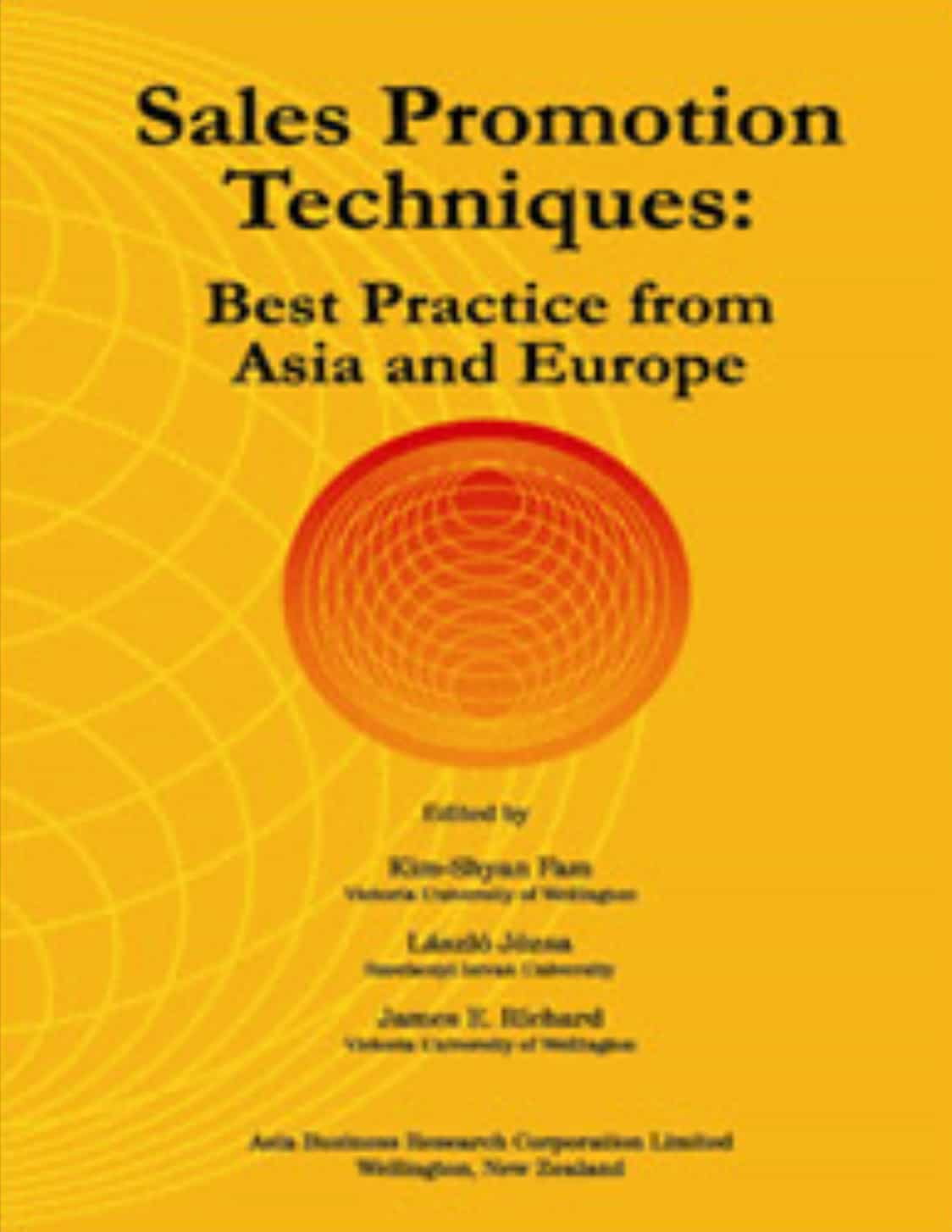
| Editors | : | Kim-Shyan Fam, László Józsa, and James E. Richard |
| Cover | : | Paperback |
| Language | : | English |
| Publisher | : | Asia Business Research Corporation Limited |
| Publication Date | : | November 2010 |
| ISBN | : | 978-0-473-17779-9 |
| Price | : | NZ$150 |
| NZ$135 (MAG Scholar members) | ||
| Payment Option | : | Banker Cheque / Bank Draft |
| Payable to | : | Asia Business Research Corporation Limited |
| Mailing Address | : | ABRC Limited, PO Box 5257, Lambton Quay, Wellington 6145, New Zealand |

Preface
Kim-Shyan Fam László Józsa James E. Richard Joe Choon Yean Chai Kim-Shyan Fam László Józsa James E. Richard Joe Choon Yean ChaiMost organizations want to understand how consumers evaluate the sales promotion tool as it is becoming a significant and increasing part of marketing expenditures. This Handbook on Sales Promotion Techniques: Best Practice from Asia and Europe represents a comprehensive compilation of the most recent research and opinions from leading academics. The Handbook is aimed at marketing and sales professionals, international marketers, marketing managers considering expansion into international markets, as well as researchers and academics.
The work covers the broad area of sales promotion and techniques from discounting to more sophisticated sales promotion combinations and strategies. Most chapters comprise a thorough discussion of applications including a social and economic consideration for each country. The Handbook serves as both an introduction for those without prior knowledge of sales promotion techniques, and as a comprehensive reference for researchers and practitioners interested in the most recent sales promotion techniques used world-wide. As well as an analysis of which sales promotion techniques work best in each country, the influence and impact of cultural and social elements are examined.
Although there are a finite number of sales promotion techniques available in the literature today, not all techniques work equally well or produce similar results across the different countries. Monetary promotions (e.g., coupons and discounts) are among the most preferred techniques due to their direct and immediate effect on sales and market share. Since monetary promotions can, in the long term, negatively influence the quality perceptions, price sensitivity and brand equity of the promoted product, the chapters also review commonly used non-monetary promotions (e.g., free gifts, free samples, sweepstakes and contests). Each chapter examines one specific country, emphasising the sales promotion activities which work best for that country, and providing appropriate analysis and insight using original or existing research data.
The Handbook consists of 17 chapters focused on real world sales promotion techniques and results. A wide range of countries and cultures are reviewed; ranging from New Zealand in the South Pacific, to France in Europe, Saudi Arabia in the Middle East and large emerging-market countries such as China, India and Indonesia. The diversity of countries, cultural values and sales promotion techniques covered in the Handbook provide rich reference material for marketing practitioners and researchers. The Handbook is essential for international marketing students who want to have a sound understanding of the influence of cultural values and religious beliefs on the effectiveness of different sales promotion techniques.